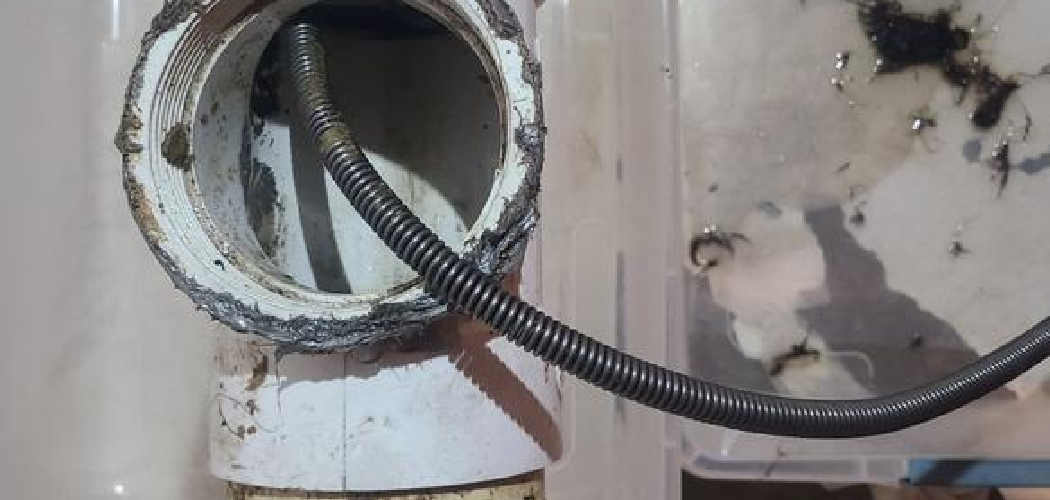Cleaning a toilet drain snake is an essential maintenance task that ensures it operates efficiently and remains hygienic for future use. Over time, debris, grime, and bacteria can accumulate on the tool, making it less effective and potentially unsanitary.
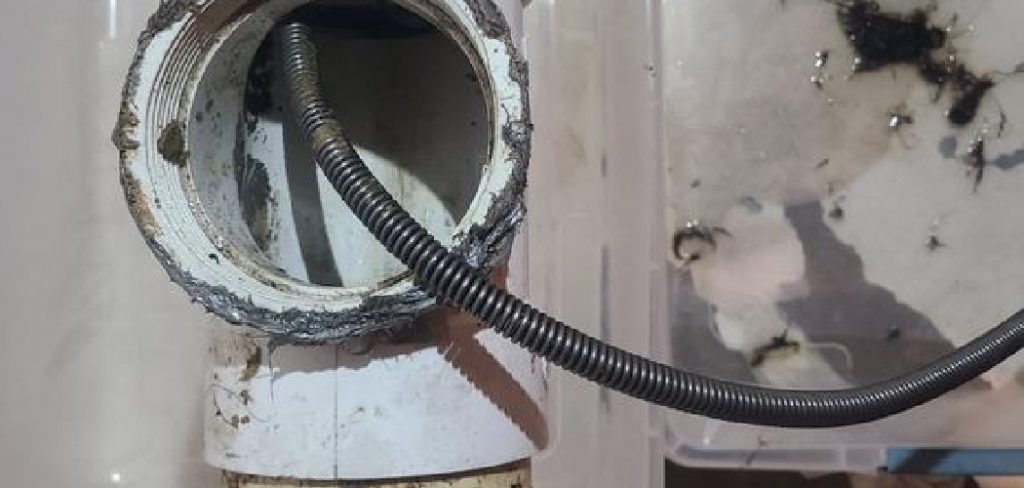
By following proper cleaning practices, you can extend the lifespan of your drain snake and ensure it is ready for tackling even the toughest clogs. In this article, we will discuss how to clean toilet drain snake.
Tools and Materials Needed
Before you begin cleaning your toilet drain, gather the following tools and materials to ensure the process is thorough and efficient:
- A Bucket or Large Container
- Rubber Gloves
- Mild Detergent or Disinfectant
- A Scrub Brush or Old Toothbrush
- Warm Water
- Old Towels or Rags
- Protective Eyewear (Optional)
Having these items ready will make the cleaning process smoother and help maintain proper hygiene throughout.
Safety Precautions
Cleaning a toilet drain snake involves handling tools that may come into contact with harmful bacteria or debris. To protect yourself and ensure a safe cleaning process, follow these safety precautions:
Wear Protective Gear:
Always wear rubber gloves to prevent direct contact with dirty surfaces, and consider using protective eyewear to shield your eyes from splashes.
Work in a Well-Ventilated Area:
If you’re using strong detergents or disinfectants, ensure proper ventilation to avoid inhaling fumes.
Avoid Cross-Contamination:
Use separate cleaning tools and towels specifically for this task to prevent spreading bacteria to other areas.
Handle with Care:
If the snake has sharp or jagged edges, be cautious while cleaning to avoid cuts or abrasions.
Wash Hands Thoroughly:
After completing the cleaning process, wash your hands with soap and warm water, even if you were wearing gloves.
By taking these precautions, you can complete the task safely and with peace of mind.
6 Simple Step-by-Step Guidelines on How to Clean Toilet Drain Snake
Step 1: Put on Protective Gear
Before starting the cleaning process, ensure you are wearing appropriate protective gear. This includes a pair of sturdy rubber gloves to keep your hands safe from dirt and bacteria.
Additionally, consider wearing safety goggles to prevent splashes, especially if using strong cleaning solutions. Proper protective gear is essential for maintaining hygiene and protecting yourself during the task.
Step 2: Remove the Drain Snake from the Toilet Bowl
Carefully extract the drain snake from the toilet bowl. Slowly rotate the handle as you pull to ensure you dislodge any debris or blockages that may have been caught. Avoid yanking the snake out abruptly, as this could cause splashes or damage to the toilet.
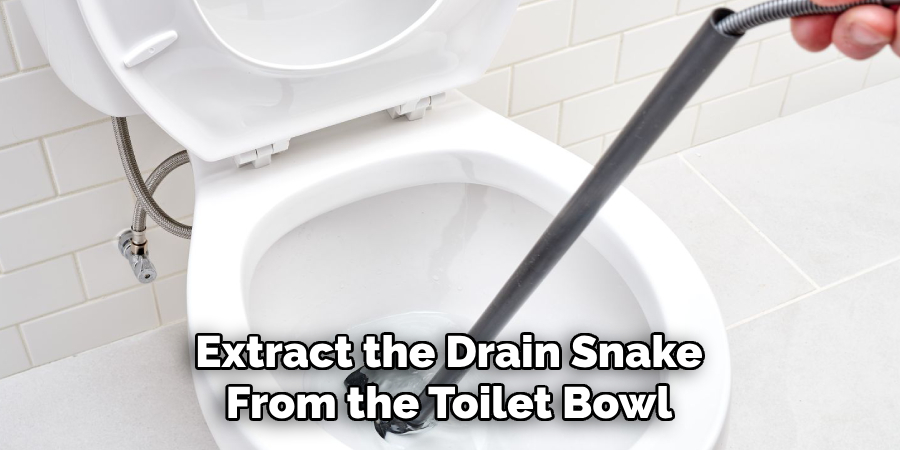
Once removed, keep the snake over a bucket or designated cleaning area to contain any mess and prepare it for cleaning.
Step 3: Prepare Cleaning Solution
Fill a bucket or container with warm water and add a suitable cleaning solution, such as dish soap or a household disinfectant. Mix thoroughly to ensure the cleaning agent is evenly distributed. The cleaning solution will be used to sanitize the drain snake and any tools or surfaces that came into contact with the toilet.
For best results, follow the instructions on the cleaning product to determine the proper dilution ratio. This step is crucial for maintaining cleanliness and preventing the spread of bacteria or germs.
Step 4: Soak the Drain Snake in the Cleaning Solution
Submerge the drain snake completely in the prepared cleaning solution. Allow it to soak for at least 15-20 minutes to ensure that any bacteria, germs, or residue are effectively removed. While the drain snake is soaking, you can take this time to wipe down any tools or surfaces that need sanitizing, using the same cleaning solution.
After soaking, use a brush or scrub pad to gently clean the snake, focusing on areas where debris may be trapped. Rinse thoroughly with clean water after cleaning to remove any remaining solution or residue.
Step 5: Scrub and Rinse
After the soaking process is complete, carefully inspect the drain snake for any lingering dirt or debris. Use a stiff-bristled brush or scrub pad to thoroughly clean all surfaces of the snake, paying special attention to crevices or tight areas where buildup may occur. Ensure you scrub both the cable and handle to remove any contaminants effectively.
Once you’re satisfied with the cleaning, rinse the snake under warm, running water to wash away any remaining cleaning solution or loosened debris. Repeat the rinsing as needed until the water runs clear, ensuring the snake is fully sanitized and ready for its next use.
Step 6: Dry and Store
After rinsing, use a clean, dry cloth to gently wipe the snake, removing as much moisture as possible. Pay particular attention to drying any joints or crevices to prevent rust or corrosion. Once the snake is thoroughly dried, neatly coil it and place it in its designated storage container or area. Ensure the storage space is dry and free from dust or moisture, as these conditions can compromise the longevity and functionality of the tool. Proper storage will keep the snake in optimal condition for future use.
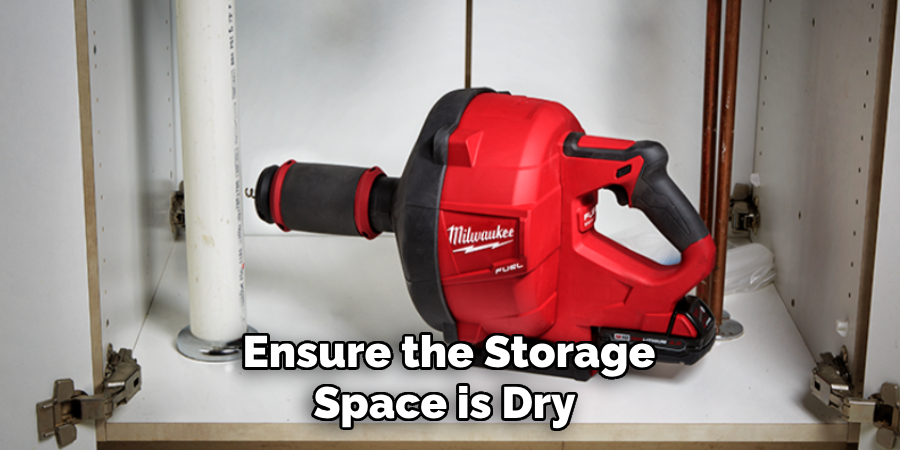
Following these steps on how to clean toilet drain snake will not only ensure its effectiveness but also extend its lifespan. It is important to regularly clean and maintain all plumbing tools, including the toilet drain snake, to avoid clogs and other plumbing issues.
Additional Tips for Cleaning Drain Snakes:
- Always wear gloves when handling a dirty drain snake to protect yourself from bacteria and waste.
- If your drain snake has removable parts, such as augers or blades, clean them separately with hot water and a mild detergent before reattaching them.
- After cleaning, make sure to thoroughly dry the drain snake before storing it to prevent rust or damage.
- If you are unable to effectively clean your drain snake or notice any signs of wear and tear, it may be time to replace it with a new one.
By following these additional tips, you can ensure that your toilet drain snake remains in good condition for all your future plumbing needs. Remember, proper maintenance is key to keeping your plumbing tools working efficiently. So, make sure to regularly clean and maintain your toilet drain snake for hassle-free use every time!
Do You Need to Use Professionals?
While a toilet drain snake is a highly effective tool for clearing clogs on your own, there are situations where hiring a professional plumber is the best course of action. For example, if you encounter recurring blockages despite using the drain snake, this could signal a deeper issue within your plumbing system, such as tree root intrusion or damaged pipes.
Professional plumbers have access to specialized tools and expertise to diagnose and resolve such complex problems effectively. Additionally, if you are uncomfortable using a drain snake or the clog appears to be severe, leaving the task to a qualified professional can prevent further damage and ensure the issue is resolved safely and efficiently.

How Much Could It Cost?
The cost of addressing a clogged drain can vary significantly depending on the severity of the issue and the solution required. For minor blockages, using a drain snake or chemical drain cleaner could cost between $10 and $50. However, if professional assistance is necessary, homeowners can expect to pay anywhere from $150 to $500 for a standard drain cleaning service.
More complex issues, such as pipe replacements or resolving damage caused by tree roots, may increase costs to anywhere between $1,000 and $3,000 or more. It is always advisable to get a detailed estimate from a licensed plumber to understand the full scope and cost of the required repairs.
Frequently Asked Questions
Q1: How Often Should Drains Be Cleaned?
A1: The frequency of drain cleaning depends on various factors such as the age of your plumbing system, the number of people in your household, and the type of waste that goes down your drains. It is generally recommended to have your drains professionally cleaned every 1-2 years to prevent clogs and maintain proper functioning.
Q2: Are There Any Natural Methods I Can Use to Clean My Drains?
A2: Yes, there are natural methods that you can use to clean your drains. These include pouring boiling water down the drain, using a mixture of baking soda and vinegar followed by hot water, or using a plunger to dislodge smaller blockages. However, these methods may not be as effective as professional cleaning and may not completely remove all debris from your drains.
Q3: How Often Should I Clean My Drains?
A3: It is recommended to clean your drains at least once a month to prevent buildup and clogs. However, if you notice slower draining or foul odors, it may be necessary to clean them more frequently. Additionally, regular maintenance and proper use of your drains can help prevent the need for frequent deep cleaning.
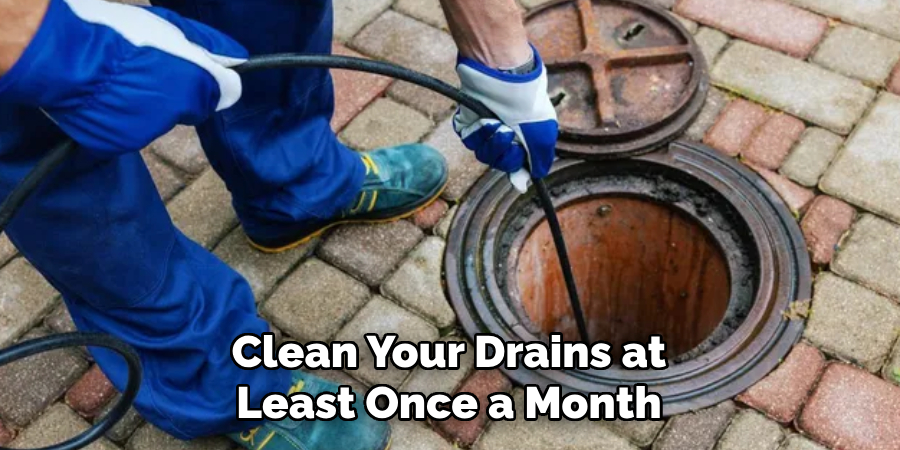
Conclusion
Regular drain maintenance is essential for keeping your plumbing system functioning smoothly and preventing inconvenient clogs. By adopting a consistent cleaning schedule and using your drains properly, you can avoid costly repairs and ensure the longevity of your plumbing.
When in doubt or faced with stubborn blockages, seeking professional assistance can help resolve issues effectively and safely. A little preventive care goes a long way in maintaining a healthy and efficient drainage system. Thanks for reading this article on how to clean toilet drain snake.

